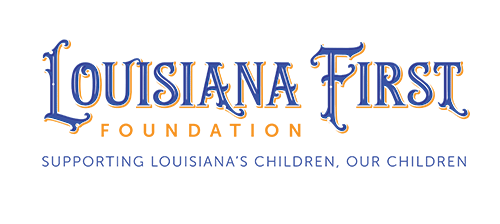Teach MAM
Teach MAM: An Exciting Partnership to Strengthen Arts Education Across Louisiana
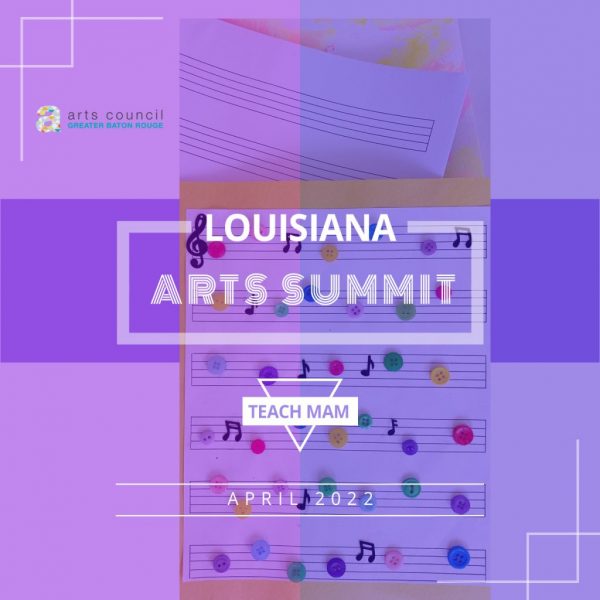
TEACH MAM
Art Integration
Art Integration
—Supporting Success for the Whole Child—
Re-cap on the Louisiana Arts Summit Conference
The Teach MAM Ambassadors recently presented on Arts Integration at the Louisiana Arts Summit produced by the Arts Council of Greater Baton Rouge and the Louisiana Division of the Arts. The presentation focused on teaching the Arts, Music, Visual Arts, and Movement through integration with core subjects such as English, Mathematics, Science, and Social Studies. So precisely, what is arts integration? The Kennedy Center for the Arts defines art integration as :
Arts integration is an approach to teaching in which students construct and demonstrate understanding through an art form. Students engage in a creative process that connects an art form and another subject area and meets evolving objectives in both (https://www.kennedy-center.org/).
Arts integration is vital to gaining a higher level of student engagement during the teaching and learning process. Not every student will be able to learn in the traditional manner of sitting at a desk and following a lecture. Arts integration allows students to learn in different ways and processes than conventional teaching. Incorporating the arts while still fulfilling the standards and mandatory requirements has proven beneficial for all students. In Arts-Integrated Curriculum, the arts become the approach to teaching and the vehicle for learning. Students meet dual learning objectives when they engage in the creative process to explore connections between an art form and another subject area to understand both better (https://www.ncesd.org/).
Music Integration
The Music Ambassador, Annelise Cassar Tedesco, presented Music Integration in multiple forms that can be applied in the core curriculum.
Music is Core Content
This affirms that music is and should be considered core content by virtue of its components. Consider the following:
- Math: Counting, Fractions, and Proportions
- Science: Physics of Sound and Acoustics
- English: Literacy, Text Analysis, and Reading
- Social Studies: Historical Context, Cultural Tradition, and Significance
During the presentation, ideas were shared. It was suggested for integrating music in English Language Arts by encouraging teachers to delve deeper and utilize masterworks of speech and song. She suggested that teachers can do this by focusing on works from diverse genres, generations, ethnicities, and backgrounds. Some examples of this could be:
“Hold Fast to Dreams”
-text by Harlem Renaissance leader Langston Hughes
-music by Florence Price, the first African-American woman to be recognized as a symphonic composer and have a composition played by a major orchestra
“The Hill We Climb” by 2021 Inaugural Poet Amanda Gorman
“Me and the Sky” from Come From Away, the Canadian musical by David Hein and Irene Sankoff
-based on events surrounding the attacks of 9-11 and Operation Yellow Ribbon
“The Vagabond”
-text by Scottish writer Robert Louis Stevenson
-music by British composer Ralph Vaughan Williams
Content Connection
The second example focused on social studies classes. It was proposed that when class content focuses on a specific historical era or works from a previous time period, teachers could consider incorporating musical examples from the time period being studied.
Example: World War II Unit
“Till Then” performed by The Mills Brothers
“Boogie Woogie Bugle Boy” performed by The Andrews Sisters
Cultural Connection: Unpack the text to reveal themes of the historical period
Class Climate Tip: Use musical selections to align the environment and prepare students to engage with the topics of the day
Music is Expression
Music is a way to communicate, advocate, and inspire change on many levels. Listening to music can impact or amplify mood in oneself or others. In many environments, such as a classroom, a weekly staff meeting, or even the beginning of a zoom gathering, music selections can frame the style of productivity wishing to be achieved and prepare listeners to be participants in an intentional contributing way.
Here are some examples of how music can inspire mood and energy while motivating and managing inner being:
When preparing to complete a specific task, consider musical examples that align student mood and energy to the task at hand. This strategy can also be a powerful tool in classroom management.
Example: Research Essay Writing Activity
“Clair de Lune” by Claude Debussy
“Moonlight” Sonata by Beethoven
Cultural Connection: Choose an instrumental piece concurrent with the topic, when the event occurred, or when the researched person lived.
Class Climate Tip: Use musical selections to align the type of focus and energy needed for students to complete the task with the highest level of success
By integrating music into the core curriculum, teachers and leaders provide students with a pathway to learning that can become deeper, more engaging, and invoke inner change through the power of music.
Visual Art Integration
While every discipline is essential, Carolyn Scalfano, our Visual Arts Ambassador, has a unique way of incorporating visual arts into core academics. During the recent Arts Council Conference, Scalfano focused on three critical attributes highlighted in an arts-integrated curriculum: Well Being of the Student, Reinforcement of Core Content, and Understanding Historical Events.
Well Being of Children: Classroom Culture
Overcoming Adversity
Frida Kahlo was a Mexican artist who suffered from an abundance of physical and mental health challenges throughout her life. Born an athlete, she had polio at a young age and then broke her back in a bus accident. Showing her life to students presents art as a means of self-expression and an example of perseverance. Kahlo’s experience uses visual art as a coping skill for challenging times which is a way students can emulate her coping process.
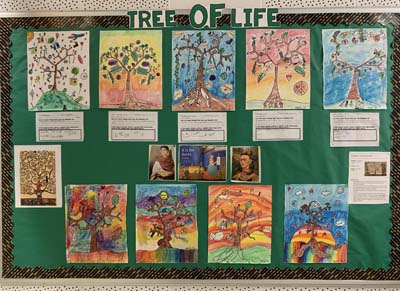
Discussing Poverty
You Are Not Defined by Your Current Situation
Clementine Hunter was born into slavery as a field hand on the Melrose Plantation in Natchitoches, LA. Scalfano recently studied Hunter and learned that students were only provided with old dry leftover paints, dirty brushes, and rags to create their paintings. This was an attempt to inspire them to make the most of what they have rather than focus on what they don’t have.
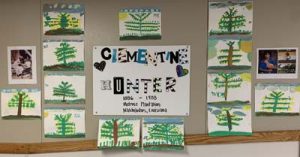
Exploring Artists from Diverse Cultural Backgrounds
Scalfano strives to expose students to a wide variety of visual artists, ranging from Japanese contemporary artists, movie producers from Hollywood, and the famous (European) “masters” to political and civil rights activists.
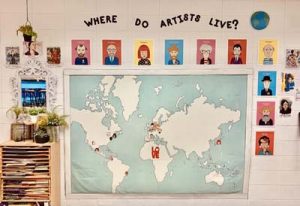
Cross-Curricular Collaboration
Curriculum Support of Colleagues
(Incorporating concepts that require reinforcement)
Scalfano provides literature to her coworkers at the beginning of the year. This allows teachers to communicate core lessons that need extra time and attention. It also opens doors for collaboration between Scalfano and teachers on integrated art lessons throughout the year.
Incorporate Grade-Level Standards
Scalfano uses the curriculum provided by her parish as a guide to incorporate relevant vocabulary and revisit grade-level expectations.
Traditional Response to Intervention (RTI) at Pineville Elementary School is referred to as WIN, which stands for What I Need. These small groups meet with other students at their level and work on filling gaps to help them keep up in their core classes. Scalfano teaches three WIN groups. This informs her of where the students need reinforcement in specific skills and allows for rich conversations with content teachers.
Historical Events
Retouch on Lessons in a Different Format: Visual Art
Art history is history and directly coincides with content studied in students’ social studies/ history curriculum. Scalfano has a map in the art studio depicting artists’ locations around the world. Anytime students explore a new artist, they review the continents and find the artist on the map, meanwhile discussing who else (if anyone) originated from that area. This innately serves to reinforce the concept of geography. For example, before Thanksgiving break, after the students learned about Columbus and the colonization of the Americas, students studied many maps of the United States, and Scalfano tied in the incredible artwork of Native American visual artist and political rights activist Juane Quick-to-see Smith. Each student was asked to have some theme behind their unique map. Some of the topics the students focused on as the theme for their work were unity vs. division, equality, and embodying the idea of “Uniting the States” through values like acceptance, forgiveness, and choosing not to judge others based on looks, race, gender identity, or social status.
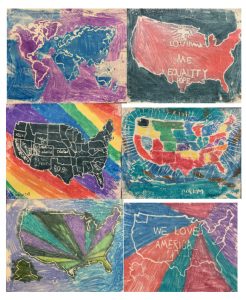
Scalfano’s primary focus and ultimate goal in the integrated arts studio is to strive to teach lessons about artists who are going through journeys similar to students and facilitate guided discussions where students feel safe to process their emotions as a classroom community. This includes students asking important questions and diving into conversations, exploring differences of opinions, and sometimes sharing information aloud to their classmates. The goal is that engaging in these discussions creates a safe space emotionally for students and may promote a positive psychological state of mind in their class and discourage negative behaviors such as judgment, bullying, and isolation.
Movement/Physical Education Integration
Just as important as visual art and music are to arts integration, so is movement. Our Movement Ambassador, Keyre’ Bradford, also presented at the Art’s Council Conference, focusing on movement integration and using movement to improve and treat students with trauma. The presentation gave teachers an overview of how movement can positively affect your brain, body, and feelings. It also included why movement should be included in arts integration. Teachers were given examples of how to integrate physical movement into core lessons.
Ways to integrate movement into core subjects
Examples include:
- Movement in the core subjects can come in the form of “Brain Breaks,” when every student stops what they are doing and performs a class wide exercise or dance together, with or without music.
- In English, students can play “Beach Ball Toss” with one of the large plastic beach balls that has the 8 or 6 colors on them and have the sight words labeled on the ball, and once a student catches the ball, they have to say the word immediately.
- You can also have students act out or role-play different movements in a story or a particular character.
- In math, students can add, subtract, and incorporate greater than and less than into a jumping jack answer/response form. Incorporate movement in the first hour of every hour in class. Set a timer or have the clock physically labeled with a quick exercise to get students up and moving. Example… 9:00 15 jumping jacks, 10:00 15 standing crunches, 11:00 15 Star stretches, etc.
- In science, you can integrate physical movement by going through Newton’s 3rd law of motion. (Force, direction, and reaction)
- For social studies, when you teach lessons on other countries and their customs, delve deeper and explore their games and sports. For example, have students do their research on the recreational customs of the land and then conclude with students playing a quick game or sport in which they learned about.
Movement/Physical Education Helps to Heal Trauma and PTSD
Movement and physical education integration is vital, but improving a child’s trauma with movement is just as crucial. In the wake of the aftermath of Covid-19, we are all dealing with and coping with various types of trauma. So using movement as a means of therapy should prove beneficial for students and teachers alike. Several studies and countless research have been done to prove that exercise and movement are linked to improved levels of mental and emotional trauma and reducing PTSD symptoms. In addition, the chemical reaction in the brain that takes place when one engages in regular physical exercise has been linked to increased levels of happiness and euphoric feelings, which are needed when dealing with the anxiety and depression associated with trauma and PTSD.
While the benefits of movement surpass the negative feelings of beginning a routine, teachers and students both need to understand that exercise can trigger negative emotions. When starting an exercise routine, similar anxiety symptoms can closely be mimicked when exercising, such as sweating, elevated heart rate, tightness in the chest, and shortness of breath. These coinciding factors may cause an issue when using movement as a form of positive trauma theory. Those initiating exercises for the individual suffering from trauma need to hone in on the positive aspects and give the individual suffering from trauma or PTSD a focus point other than discomfort. For example, they can use breathing techniques and focus on the process, mind-to-muscle reactions, or a specific point in the scenery.
Overall, arts integration is a very beneficial tool that, if appropriately utilized, can provide teachers and students with endless positive outcomes in education. The Seneca Academy of the Arts states that:
Here is what we’ve learned through experience about why arts integration is so important:
- Working in the arts helps learners to develop creative problem-solving skills.
- Teaching through the arts can visually present difficult concepts, making them easier to understand.
- Art instruction helps children develop motor skills, language skills, social skills, decision-making, risk-taking, and inventiveness.
- Visual arts teach learners about color, layout, perspective, and balance: all necessary techniques in presentations (visual, digital) of academic work.
- Integrating art with other disciplines reaches students who might not otherwise be engaged in classwork.
- Arts experiences boost critical thinking, teaching students to take the time to be more careful and thorough in how they observe the world.
- The arts provide challenges for learners at all levels.
- Art education connects students with their own culture and the wider world.
- A report by Americans for the Arts states that young people who regularly participate in the arts (three hours a day on three days each week through one full year) are four times more likely to be recognized for academic achievement, to participate in a math and science fair, or to win an award for writing an essay or poem than children who do not participate.
- A study of Missouri public schools in 2010 found that greater arts education led to fewer disciplinary infractions and higher attendance, graduation rates, and test scores. https://www.senecaacademy.org/
With all the positive influences the Arts can have on students, teachers, and the curriculum, we as educators need to seize the opportunity to include and integrate the Arts into everyday teaching practices and curriculum mandates. As Teach MAM ambassadors, it is our responsibility to advocate for teaching and supporting the “whole child,” and the arts provide us with that opportunity.
According to The Kennedy Center:
“Arts Integration, as an approach to teaching and learning, supports many tenets for the development of the whole child by providing emotional safety, promoting full engagement in learning that is personally meaningful and challenging. The arts offer wholeness to learning that integrates though, feeling, and action, weaving together “the threads that connect mind, body, and spirit.” https://www.kennedy-center.org/
Works Cited
What is Arts Integration? Explore the Kennedy Center’s comprehensive definition https://www.kennedy-center.org/education/resources-for-educators/classroom-resources/articles-and-how-tos/articles/collections/arts-integration-resources/what-is-arts-integration/
What is Arts Integration?
https://www.ncesd.org/news/what-is-arts-integration/
Arts Integration in School: 10 Reasons Why It’s Important
https://www.senecaacademy.org/10-reasons-why-integrating-art-is-important-in-school/
